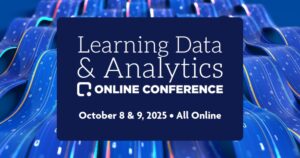Your cart is currently empty!

New Approach Needed to Facilitate, Measure Digital Learning

“Self-service” learning is emerging as a dominant feature ofdigital learning.
This is radically different from the conventional approachto instructional design, which not only defines learning goals, it determines thepath that all learners will take to reach those goals. “It’s highly defined,”said David Kelly, the eLearning Guild’s EVP and executive director, “like aninterstate highway that goes straight to the destination.” Modern eLearning mayhave variations—branching roads, exits, and roadside stops—but that’s notenough. Future digital learning “won’t even have guardrails—no roads, no maps;learners will find their own way to the destination,” Kelly said.
That shift poses a challenge to L&D professionals, whowill need to assess and measure what employees know, though they may have littleinsight into each employee’s learning path.
As part of a crucial conversation about the future ofdigital learning, Learning Solutions Magazine published four articles. “Digital Learning: An Interview with David Kelly” introduced the concept of digitallearning; “Emerging Digital Learning Landscape: Flexibility, Opportunity” looked at how L&Dcan anticipate and best meet learners’ changing needs; and “5 Reasons Execs Should Pay Attention to Digital Learning” presented anexecutive perspective. Here, Learning Solutions examines the effects of changesin learner behavior and expectations on how L&D professionals measure thoseemployees’ knowledge and skills.
Reevaluating assessment
“We’ll need to allow employees’ knowledge and experience toaffect how we support them,” Kelly said, emphasizing that the transformation ofhow and where employees learn doesn’t mean the end of eLearning. Instead, hesaid, it’s more of a rebalancing or difference in emphasis.
L&D teams generally devote the bulk of their resourcesto creating content, to conveying information, to teaching or training. Asemployees increasingly seek outside sources for foundational knowledge, L&Dteams will likely need to reallocate resources. “Only a small sliver of time isspent on assessment,” Kelly said—often on knowledge checks or testing learners’understanding of material presented in an eLearning course, rather than deeperassessments that measure competency.
“Our industry knows what it means to measure competency,”Kelly said. Thus, as L&D teams adjust, resources might be shifted todevising and implementing new ways to measure employee performance. L&Dprofessionals will need to:
- Figure out what employees know already
- Identify—and fill—gaps in their basic knowledge,gaps that will be different for each employee
- Create targeted content that coverscompany-specific knowledge and skills
One possible outgrowth of L&D efforts to measurecompetency could be new forms of credentialing. “More organizations areaccepting that self-directed learning matters,” Kelly said; and they arerecognizing that knowledge with informal and in-house tools.
Just-in-time resources
The types of content that L&D teams create could alsosee radical changes.
“If you want to understand how technology will change theway we learn, you’ve got to understand how technology is changing the way welive,” Kelly said. Employees’ expectations are shaped by the way they live,learn, and behave outside of work. “If I need to fix a weird noise that mywasher is making, I’m not going to take a course,” Kelly said. “I’m going toGoogle a solution.”
Just as someone needing to resolve a minor plumbing problemat home is likely to watch a YouTube video rather than register for a 90-minutecourse, that employee is likely to approach an on-the-job need or issue bysearching for resources that solve the immediate problem.
Syncing corporate eLearning with the self-service approach mightmean choosing eLearning formats that allow learners to access just the informationthey need, quickly, in the workflow, over courses that delve deeper into a topic but that alsotake employees away from their work for an hour or more. “That’s where the buzzaround microlearning approaches and tools that employees turn to in the moment come into thediscussion,” Kelly said. “As an industry, we want to pivot, to embrace thechanges in learner behavior.”
Indeed, interest in mobile-friendly eLearning formats, suchas chatbot-basedperformance support, podcasts,and microlessons,is burgeoning, evidenced by examples documented in Learning SolutionsMagazine and presented at eLearning Guild events.
Join the digital learning conversation
The Guild continues to explore the digital learninglandscape at DevLearn 2017 Conference & Expo this month in Las Vegas. Senior learning leaderswill delve into digital learning strategies on October 24 at the Executive Forum on Digital Learning. The conversation on digital learning continues,as a special area of focus, throughout the conference, October 25 – 27. Registertoday!



